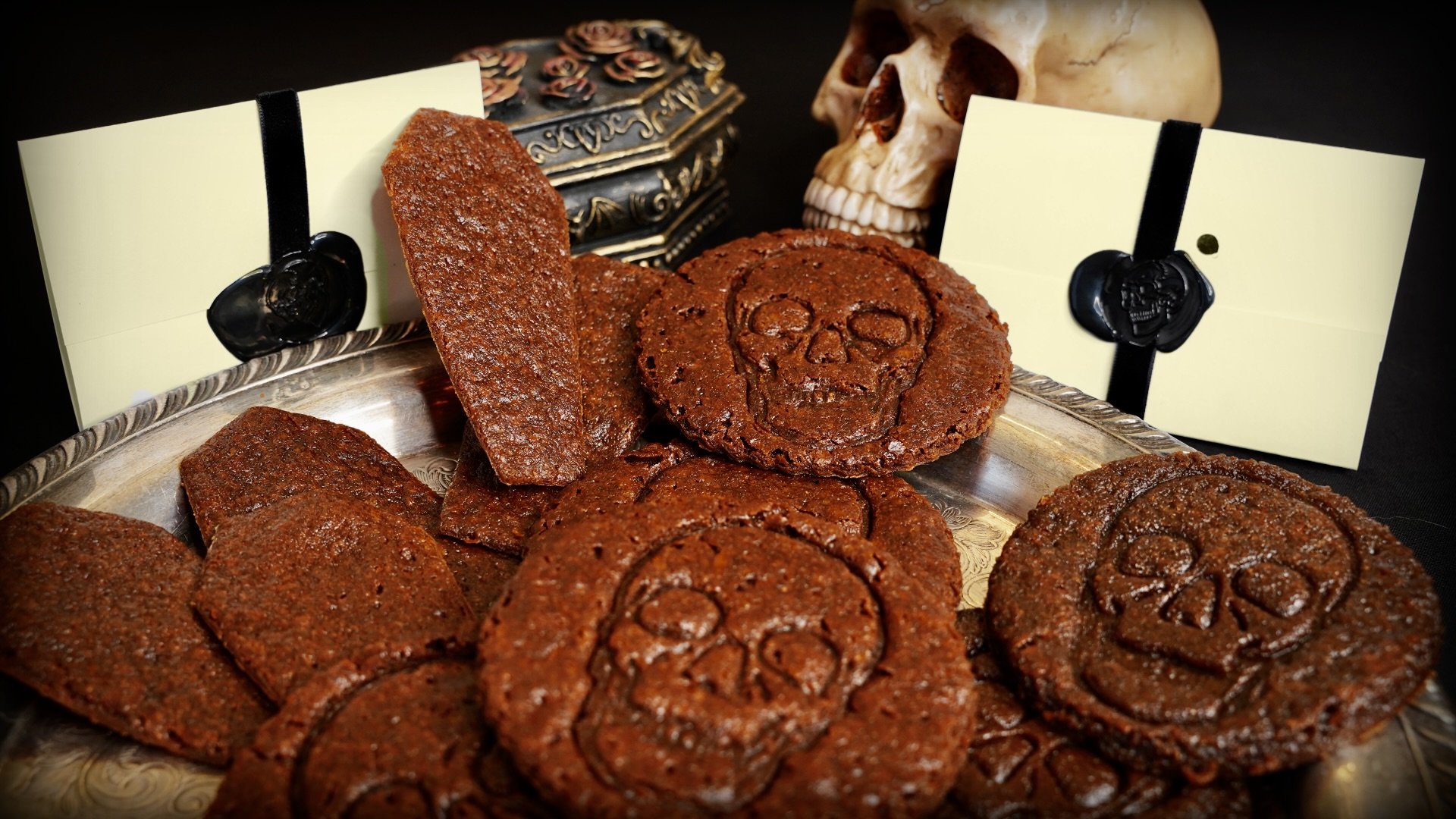Gingerbread Funeral Biscuits
These gingerbread cookies are packed with ginger flavor in a very good way with a hint of bitterness from the molasses. Macabre decoration optional, but on theme
City/Region: England
Time Period: 1845
Leaving food and drink for the dead is one of the oldest human behaviors we know about, and it’s taken many different forms throughout history. Egyptians packed tombs with mummified meat, Romans ate entire feasts around a sarcophagus, and we still leave food at graves and shrines of the dead today. In Victorian England, baked goods were given out at funerals, not unlike a goody bag at the end of a child’s birthday party. These baked goods were usually gingerbread, shortbread, ladyfingers, or sponge cake.
The gingerbread recipe from 1845 that I’m using here makes for a deliciously ginger-forward cookie that bakes up either chewy (if you roll the dough thicker) or nice and crisp (if you roll the dough thinner).
“Melt together three-quarters of a pound of treacle and half a pound of fresh butter, pour these hot on a pound of flour mixed with half a pound of sugar and three quarters of an ounce of ginger. When the paste is quite cold, roll it out with as much flour as will prevent its adhering to the board: bake the cakes in a very gentle oven.”
Ingredients:
- 1 cup (340 g) treacle* or molasses
- 2 sticks (225 g) butter
- 3 1/2 cups (450 g) flour
- 1 heaping cup (225 g) sugar
- 2 heaping tablespoons (21 g) ginger
- A bit of clove and a bit of mace*, optional
*See notes below.
Instructions:
- Sift the flour into a bowl, then add the sugar, ginger, and other spices (if using) and whisk them together.
- Heat the treacle and butter in a small saucepan over low heat until the butter is melted. Stir occasionally so nothing burns, and don’t let it boil.
- While stirring, pour the treacle and melted butter into the flour mixture, and continue to stir until it is combined. Keep working the dough until it is smooth and glossy.
- As it cools, the dough will start to firm up. It should only take a couple of minutes for it to cool enough for you to be able to turn it out onto some parchment or plastic wrap and form it into a disc. Wrap the dough well and refrigerate for at least 2 hours, preferably overnight.
- After the dough is chilled, roll it out on a lightly floured surface to anywhere from 1/4” to 1/2”. The thinner the dough, the crisper the cookie, and the thicker the dough, the softer the cookie. Cut into any shapes you like. (These cookies will spread a lot and lose their shape when they’re baked, but you can recut them while they’re still hot and they’ll hold their shape very well after that.) Freeze the dough for 1 hour.
- Preheat the oven to 325°F (160°C). Bake the gingerbread in the preheated oven for 15 minutes.
- Take the biscuits out of the oven. If you’re recutting the cookies, the best time to do so is in the first 45 seconds after they come out of the oven. After they’re shaped, move the biscuits onto a rack to cool completely. Once cool, serve them forth, no funeral required.
Notes
- Black treacle is a dark and sweet syrup with a mild bitterness, similar to molasses.
- Mace comes from the outside of a nutmeg seed and tastes similar to nutmeg with notes of cinnamon and black pepper. It's used in a lot of historical recipes and is definitely worth getting.
- Link to black treacle: https://amzn.to/2XZdW5x
Some links on this site are affiliate links. If you buy something through them, it does not cost you anything more, but we will get a small commission which helps keep the site up and running. Thanks!


